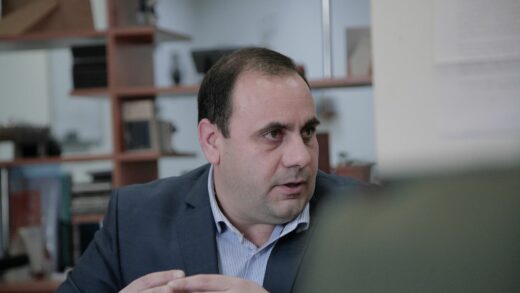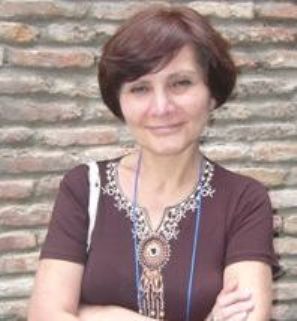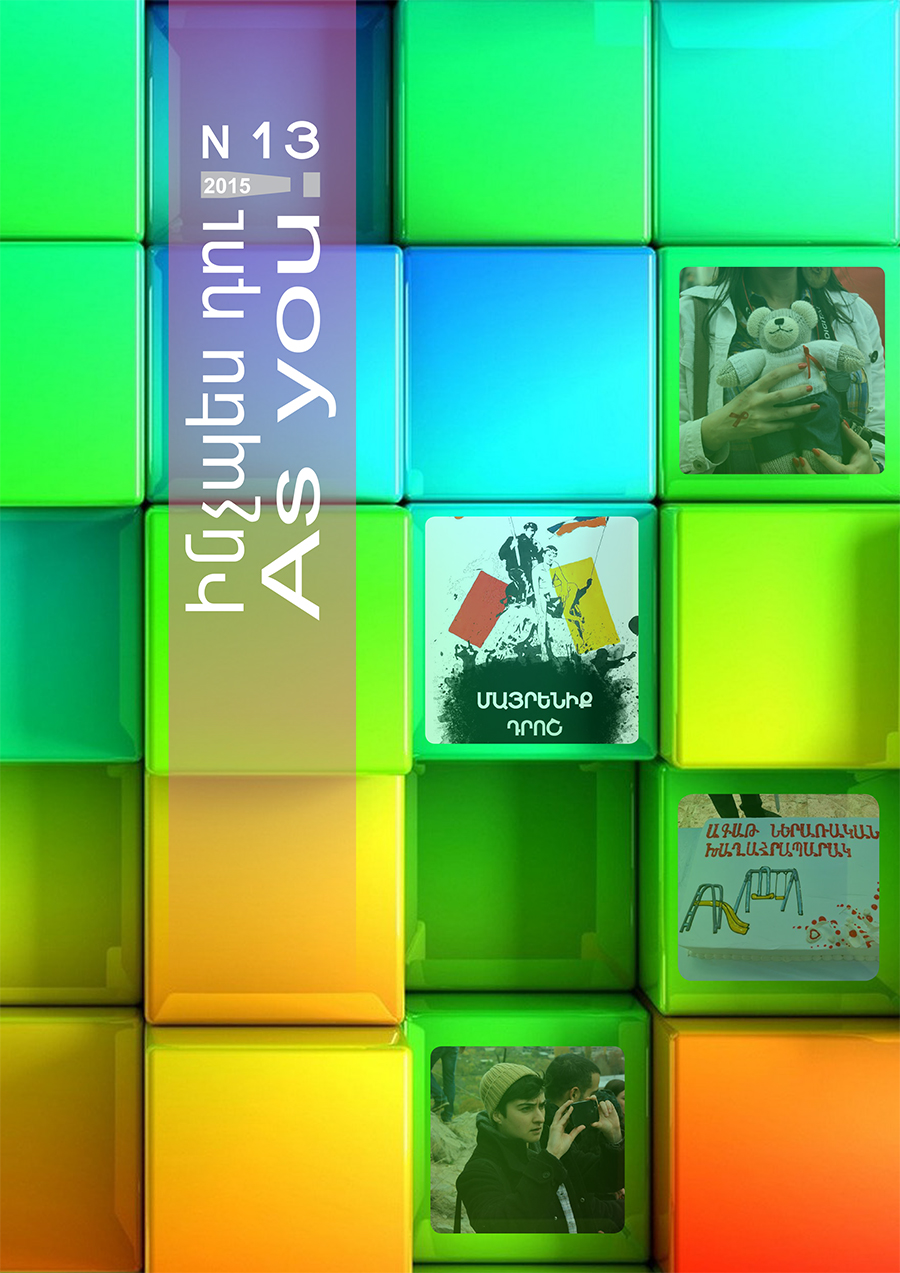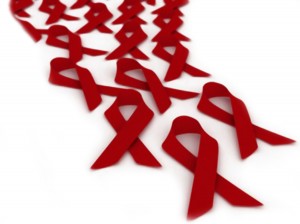 Since the early days of HIV epidemics in western countries, in the understanding of the society an association between AIDS and homosexuality was drawn: the first cases of HIV were recorded among gays in West and USSR. At first the doctors suggested naming the disease GRID – “gay-related immune deficiency” – the papers were writing just about “gay cancer”. Professionals, in search of a name, and looking at the infected communities, coined the term “4H” as it seemed to single out Haitians, homosexuals, haemophiliacs, and heroin users. Pretty soon it was clear that the virus didn’t care about one’s sexual orientation, nationality, religion or occupation: it is the behaviour that can be risky, and the “risk group” is about the whole kind of Homo sapiens. Nowadays, the main way of transmission of HIV infection is the usage of non-sterilised needles and syringes. Nevertheless, the myth of “gay disease” has been viable. Despite the obvious facts, many heterosexuals do not find using condoms necessary, based on the thinking that “HIV affects gays and drug-users, and I am neither of them”.
Since the early days of HIV epidemics in western countries, in the understanding of the society an association between AIDS and homosexuality was drawn: the first cases of HIV were recorded among gays in West and USSR. At first the doctors suggested naming the disease GRID – “gay-related immune deficiency” – the papers were writing just about “gay cancer”. Professionals, in search of a name, and looking at the infected communities, coined the term “4H” as it seemed to single out Haitians, homosexuals, haemophiliacs, and heroin users. Pretty soon it was clear that the virus didn’t care about one’s sexual orientation, nationality, religion or occupation: it is the behaviour that can be risky, and the “risk group” is about the whole kind of Homo sapiens. Nowadays, the main way of transmission of HIV infection is the usage of non-sterilised needles and syringes. Nevertheless, the myth of “gay disease” has been viable. Despite the obvious facts, many heterosexuals do not find using condoms necessary, based on the thinking that “HIV affects gays and drug-users, and I am neither of them”.
On the other hand, just like twenty years ago, HIV is a sexually transmitted infection, and just like in the beginning of the epidemic, men having sex with men (MSM) are still a vulnerable group nowadays. Being vulnerable means there are social, economic, political factors that affect the access to information on HIV/AIDS, access to healthcare, and the opportunity to make decisions regarding one’s health and on the quality of life in general.
It is in the United States where the HIV epidemic has caused the worst upshot on gays in comparison with any other group of population. Simultaneously gays of New York and San Francisco, where the most cases of HIV infection were recorded during the first few years of the epidemic, suffered from physical, emotional, social and economic impact.
Men with same-sex attractions have already been turned into the whipping boy, although, it is known that in other parts of the globe (in Central Africa for instance) HIV is spread mostly through heterosexual sexual activity.
Regardless the fact that the number of HIV-positive people in Armenia is comparatively low, it increases rapidly every year (on average the HIV-positive population in Armenia is 0.02%, yet according to the estimates the number is 10x bigger, and in some social groups the prevalence of the infection is pretty high). In a state which goes through profound social-economic, political and cultural changes, factors that contribute the spread of HIV are the uniquely negative attitude toward the infection based on fear, discrimination against HIV-positive people, low level of awareness about the infection among the population, stigma against sex workers and other social groups.
HIV-positive people in Armenia are associated with such groups condemned by the vast part of the society as sex workers, injecting drug-users, and men having sex with men. For long spell testing HIV-positive was equal to immoral behavior. As a result HIV-positive people would either face aggression or be exposed to silence about the issue of HIV/AIDS. Apart from that, the overall psychosocial atmosphere would constrain HIV-positive people to get isolated from the society. There is a variety of programs being implemented in the Republic of Armenia nowadays in order to overcome stigma. Nonetheless, this process takes time and long-term dedication from behalf of the state.
Main ways of HIV transmission in the Republic of Armenia are the injecting drug use and heterosexual sexual practices. Apart from that, there are recorded cases of HIV transmission from mother to child, through blood and same-sex sexual activities.
According to the HIV infection transmission modes, the percentage ratio of HIV carriers in Armenia is as follows:
– Transmission through heterosexual practices 56,4%
– Transmission through injecting drug usage 34,9%
– Transmission through homosexual practices 1,7%
– Mother-to-child transmission 1,6%
– Transmission through blood 0,2%
– Unknown 5,2%
In recent years less homosexual men and drug users get infected with HIV. It is first and foremost affected by the sexual behavioral change of above mentioned groups which is the result of intensive and right sanitary and awareness raising work: decreasing the number of sexual partners, usage of condoms and other means of safe sex, etc. Thereto, in many countries positive effect is reached due to activities run by healthcare institutions and non-governmental organizations (provision of free condoms, exchange of used syringes and needles with the new ones, provision of sterile syringes and single-use needles to drug users, etc).
According to the latest data of World Health Organization, 60-70% of HIV-positive people got infected as a result of unprotected heterosexual sexual intercourse.
Therefore, we nowadays need to refuse by all means the old perception of HIV as the infection of gays and drug users.
Prejudice and discrimination vs. understanding and acceptance
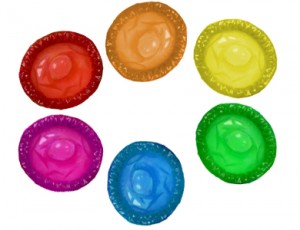 As short-sighted as it seems to be, yet discrimination is a relevant answer for some. This way of thinking implies that if one discriminates people living with HIV and those that are perceived to be HIV-positive, then one will keep away from people living with HIV and will be safe. What reality shows is that when discrimination and prejudice are prevalent in a given society, then more problems arise. For instance, some people living with HIV hide the fact they are HIV-positive to avoid hatred, injustice and discrimination. Moreover, some people that are HIV-positive do not want to even know it and refuse HIV-testing in some instances rightfully assuming that their lives could turn into hell. These people may consciously or unconsciously transmit the virus to others.
As short-sighted as it seems to be, yet discrimination is a relevant answer for some. This way of thinking implies that if one discriminates people living with HIV and those that are perceived to be HIV-positive, then one will keep away from people living with HIV and will be safe. What reality shows is that when discrimination and prejudice are prevalent in a given society, then more problems arise. For instance, some people living with HIV hide the fact they are HIV-positive to avoid hatred, injustice and discrimination. Moreover, some people that are HIV-positive do not want to even know it and refuse HIV-testing in some instances rightfully assuming that their lives could turn into hell. These people may consciously or unconsciously transmit the virus to others.
Now imagine another scenario. One knows they won’t be discriminated against because of their HIV status and are open about it. There is no fear of passing the test. Then there is no fear about being overt. What are the benefits?
- they do not live in the atmosphere of fear,
- they may connect with others like themselves,
- they may continue to live their lives in a meaningful way,
- they may have more opportunities to contribute to the society,
- they may help others like themselves,
- they will not, consciously or unconsciously, infect others,
- etc.
Lots of other points may be added to this list. Both the public health and individual’s health are better protected when we create an open, inclusive society for everyone. As human experience shows, hatred and fear cause destruction and self-destruction, and as in the past, now, too, and more than ever before, love is the answer.
In conclusion, we need to take into account:
- HIV is a panhuman infection and there must be no discrimination against anyone based on any sexual orientation or biological sex or any other characteristic,
- everyone is vulnerable towards the infection,
- there are social groups that are more vulnerable towards HIV than others, and discrimination and prejudice contribute to the spread of infection,
- knowledge is protection, and information is safety,
- fear and ignorance only contribute to the higher level of stigma and fuel the further spread of the infection,
- understanding, empathy and acceptance help both preventing new cases of HIV and leading meaningful and healthy lives for people living with HIV and for being useful and well adapted to the society,
- love is the answer.
The link between HIV/AIDS and marginalized, “different,” or socially “deviant” populations in the collective consciousness has been strong from the beginning. Hence the public health and human rights question: Which would be more effective – further repression of marginalized populations, or working with them in a way that respects their rights and dignity?
—Joanne Csete, 2005
Maya Kocharyan, Sevak Kirakosyan
